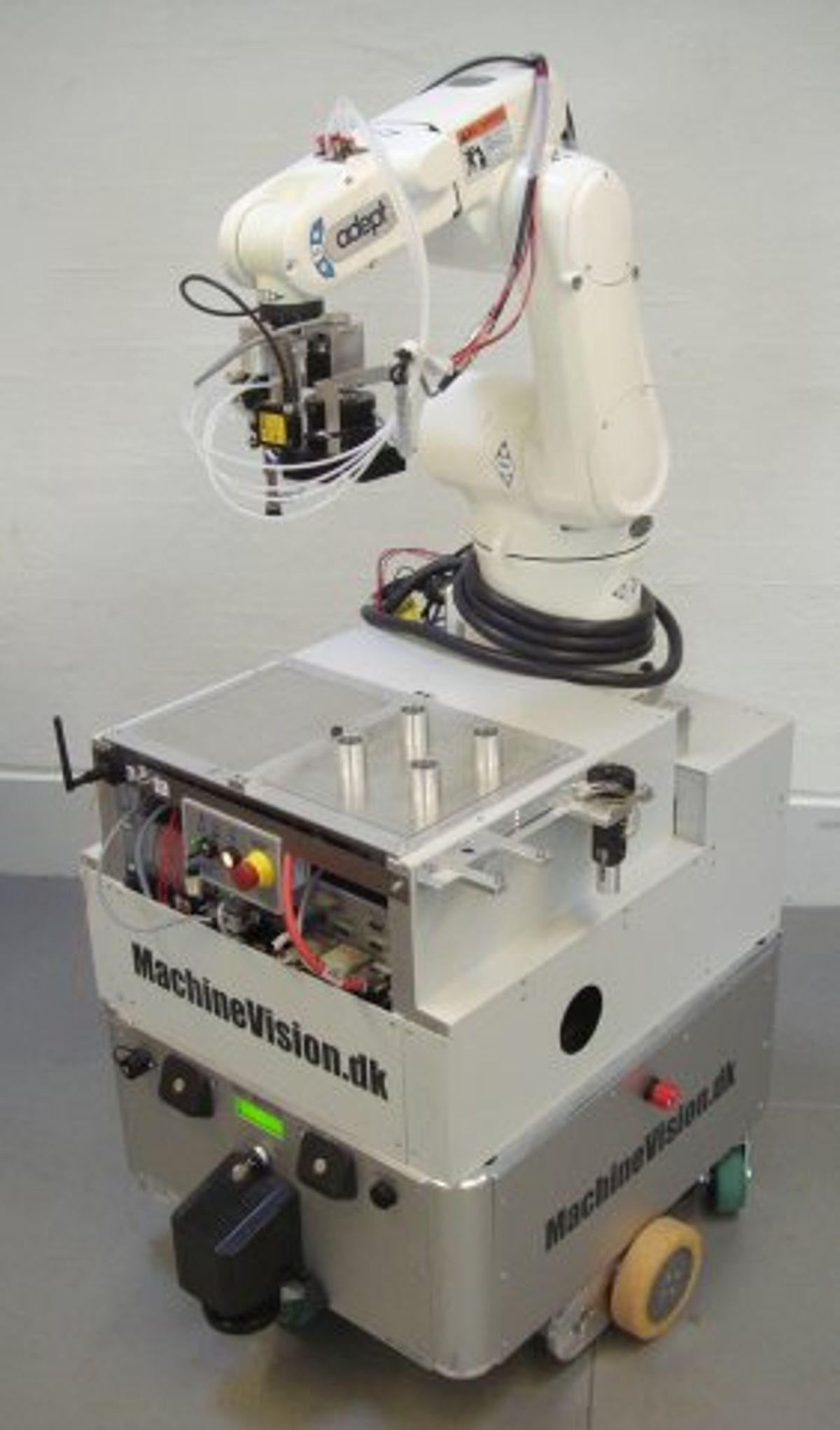Mads Hvilshøj, Simon Bøgh, and their team at Aalborg University in Denmark have been working on an industrial robot, which they named Little Helper, designed for handling parts and moving them around on a factory floor. The robot consists of a manipulator arm mounted on a mobile platform.
Manipulator arms like those manufactured by KUKA, ABB, and others have been around for decades. And mobile platforms like the warehouse robots developed by Kiva Systems and Seegrid have been gaining more adoption lately. But combining a manipulator arm and a mobile base is a more recent development (KUKA unveiled a mobile manipulator called youBot last year) with very interesting possibilities.
The Danish researchers equipped Little Helper's mobile platform with an array of on-board sensors (laser range, ultrasonic, and motor encoders), which help with navigation and safety. The manipulator system consists of an Adept six-degrees-of-freedom industrial arm, plus a tool changer and various tools. The robot also relies on a vision system, which consists of a camera with adjustable lens and light system. The current prototype, built entirely from commercial off-the-shelf components, can run continuously for eight hours, and is capable of automatically recharging itself when needed.
To program Little Helper for operation, users have to load its computer with digital layouts of the work areas and let the robot scan the environment with its sensors. With some additional programming using a graphical user interface and a touch-screen, the robot can start to navigate autonomously, pick parts, transport them, and even perform assembly tasks. The robot's different systems are decoupled, so when Little Helper is driving around, only the mobile platform is active; when the manipulator is in use, the mobile platform remains stationary. This approach helps to ensure that the bot operates safely.
But before we can see Little Helpers toiling in factory floors, the researchers will have to overcome several challenges. For one, they have to figure out if their robot can adapt to a wide variety of environments and perform tasks in a cost-effective way. The robot must be able to deal with errors and unpredictable situations and always operate in a safe way. The researchers also have to improve the programming interface, so setup is easy and not too expensive -- a crucial factor in getting this type of robot, which can cost tens of thousands of euros, out of the lab and into real factories. The Danish group plans to address these and other issues by testing their robot in a real facility at Grundfos, one of the world's largest pump manufacturers.
What caught my interest in this project is that it appears to be at the intersection of two distinct robotics areas: the well established industrial robotics area and the emerging service robotics area. This confluence is very promising. Also, Little Helper is a good example of integrating existing technologies into a novel robotics product, which, as Hvilshøj puts it, "is essential in order to gain acceptance and simplify implementation in real-world industrial environments." Does anyone need a Little Helper?
Watch a demo of the machine at work:
Image and video: Mads Hvilshøj/Aalborg University
Samuel Bouchard is a co-founder of Robotiq in Quebec City.




